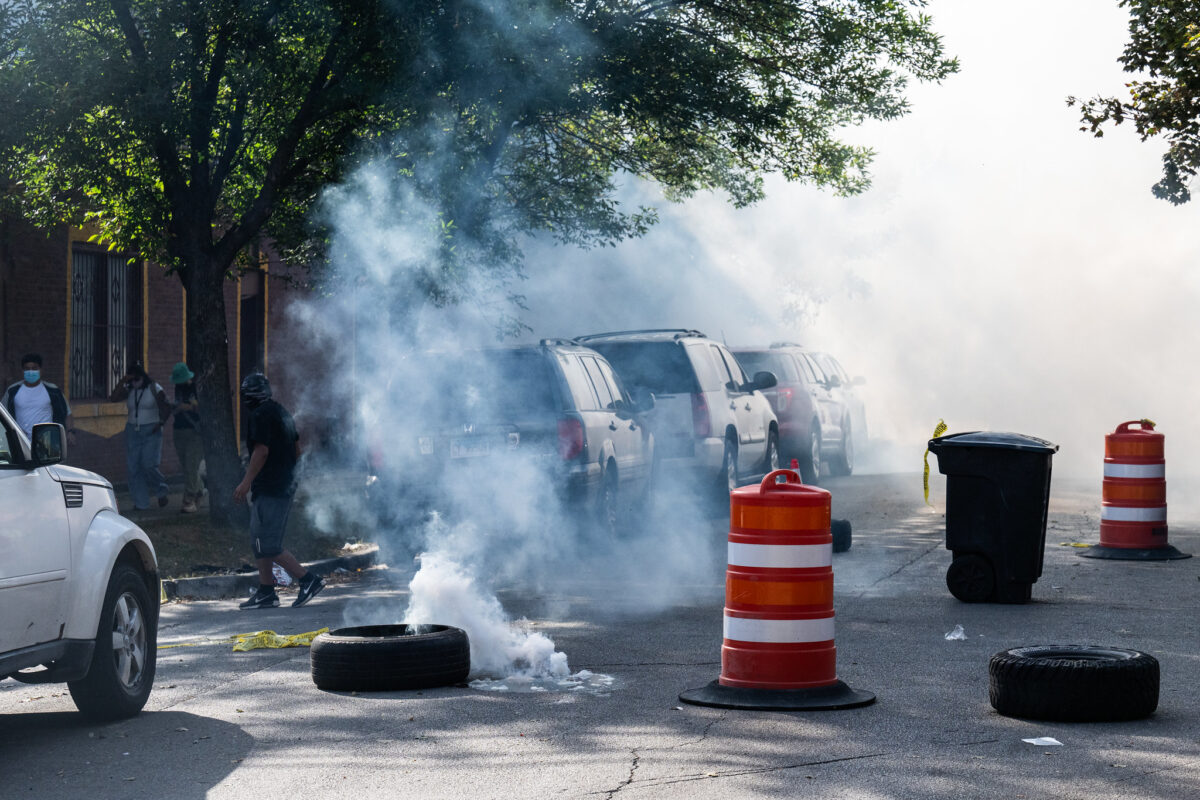Last Tuesday, October 14, a large-scale federal immigration operation swept through Chicago’s East Side neighborhood, bringing armed agents, helicopters, and tear gas into a neighborhood of families and workers, and leaving schools and small businesses reeling in its aftermath. In recent months, similar raids have unfolded in other South and West Side neighborhoods, terrifying families.
On the East Side, car horns blared through the streets—a warning system residents used to alert one another to danger. Inside a nearby high school, students were mid-test when the building went into lockdown. Helicopters circled overhead, federal agents’ vehicles carelessly sped through intersections, and agents deployed tear gas at residents despite the presence of elders, children and even babies.
One mother said her seventeen-year-old daughter described it this way:
“It felt like we were in the middle of a war.”
The mother said she was at work when the social media alerts started. Her high schooler started texting her that ICE was in the neighborhood, that kids were crying, that they could hear sirens and see helicopters.
“How do I go save my children from something like that when I’m an immigrant myself?” she said.
A community organizer described how she rushed to the scene on 105th and Avenue N. “Several of us were there as rapid-response people. And that’s when ICE was just abruptly throwing the tear gas at us.”
By midmorning, the agents were already forcing entry into small businesses on Commercial Avenue in South Chicago. “They were provoking,” she said. “People say it’s the activists, but no, ICE was intentionally provoking.”
She saw officers strike residents. At one point, she said, “They grabbed two U.S. citizens. One of them was a minor. I was trying to tell them, ‘Please release him, he’s a minor,’ and then they started tear-gassing us again. They’re violating every safety rule,” she said. “They almost ran over a woman who was just walking on the sidewalk.”
The violence that unfolded that morning was carried out with intention—authorized by federal leadership. No government should arm agents with tear gas and send them into neighborhoods of families and children. Yet that’s exactly what happened, and it continues to happen every day across Chicagoland.
In recent days, courts have tried to respond. A Cook County judge barred ICE from making civil arrests at courthouses, while another ordered agents to wear and activate body cameras. Cook County President Toni Preckwinkle has proposed “ICE-free zones” in schools, parks, and libraries. But those measures mean little to the families who’ve already lived through raids.
What happened on the East Side, and in neighborhoods across Chicago, demands accountability and memory. The images, the testimonies, and the fear that families describe are not fleeting moments of chaos. They are evidence of how state power enforces borders through violence, turning immigration enforcement itself into a weapon against communities. If there’s to be any justice, there must be accountability, not just policies written after the fact, but consequences for the agencies that terrorize communities.
We urge our readers to keep sharing information about the presence of federal agents with rapid responders, community organizations, and the press. The more we document, the harder it becomes for power to hide what it has done.

